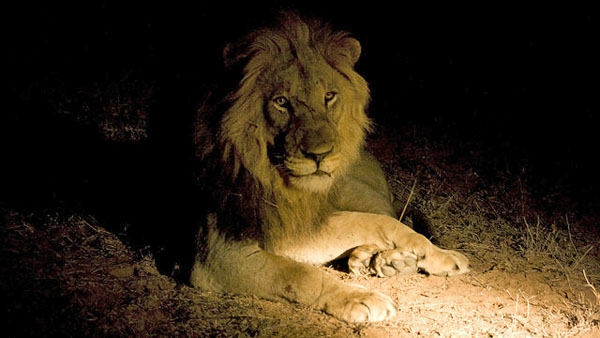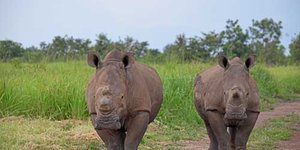Like this article?
Go on, give it a kudu!

Published on September 30 2013
Written by:
Fran
2552 views
Night time game viewing has a different ambience compared to daytime game viewing - it brings one so much closer to the wild animals. At night, it's all about survival. Predators against prey – there is no lazing around at night. It is because of the high level of predator activity during the night that guided night drives have become a popular way to explore the wildlife and to add to your safari experience. However, night drives are a definite intrusion. Using the wrong spotlights can disrupt the hunting process and can even cause damage to the animals’ vision. If you are planning a night drive as part of your safari holiday, there are some facts that you need to be aware of.
Night drives can offer a pleasant surprise – so many wildlife animals come alive at night! Slumbering in the shade is for the daytime, the nighttime is a time to hunt! At night, you are also likely to see plenty of animals hardly encountered during the day, such as the nocturnal black-backed jackal and springhare in Southern Africa. Unlike the daytime, animals can hardly hide from humans at night. Exposed to night vision technology and spotlights, finding animals at night is not a difficult task. However, it is one that should be attempted with great care – for your own safety and the wildlife’s safety.
On a night drive, your guide will trace animals by shining a spotlight and following the animals’ reflected eyes. But experts warn against using conventional white spotlights, as white spotlights are visible to many animals. Catching an animal’s eyes with a white spotlight can cause the animal up to 40 minutes of vision disruption. This could be fatal for prey animals as their fair chance of escaping from predators will be jeopardized! Whether you consider the prey or predator, where white spotlights are used, the hunt process will be disrupted. The use of white spotlights is therefore strongly warned against. On the other hand, the effect of red light on wildlife’s vision is much less pronounced. Most nocturnal animals are oblivious to filtered red spotlights, for them it appears as a usual dark night. Night drives with red spotlights are therefore likely to cause much less disruption and the wildlife and hunting process can continue without major disruption.
When choosing a guided night drive, check with the tour operator whether the following best practice principles are observed:
· Strict use of red filtered spotlights and not conventional white spotlights.
· More than one spotlight should never be shined at the wildlife at once.
· No camera flashes allowed. Photographs should strictly be taken with night vision settings or red filter settings.
· Wildlife should never be attracted or disrupted by wild or animal noises – this can greatly hamper the hunting process.
· Smoking on night drives should never be allowed.
Experiencing hunting and survival of nocturnal wildlife behavior is a very special – and an experience where one should not interfere with wildlife any more than passing by and watching. By choosing respectful and experienced tour operators for your night drive, you will make the choice of mingling with wildlife in a responsible and sustainable way!
Apps, Peter. Smither’s Mammals of Southern Africa: A Field Guide. 2008.
Photo credits: some rights reserved by lawmurray via flickr [Creative Commons].
Has been on: 11 safaris
Seeing beyond the average tourist routes and experiencing local life is my type of travel! Living in South Africa I'm an environmentalist at heart, and I continue to marvel at the beauty of the African continent.
© Your African Safari Ltd, All rights reserved.
Your African Safari is a safari-planning and safari review site. It was created to help support a healthy African wildlife population. All reviews are vetted before being approved and only ethical tours are published

Garamba National Park—an anchor of hope in the Democratic Republic of Congo
Published on January 09 2025
By: R.W.

Namibia imposes new visa requirements
Published on July 25 2024
By: yourafricansafari.com

Do I really need travel insurance or travel protection for my safari?
Published on July 30 2024
By: yourafricansafari.com